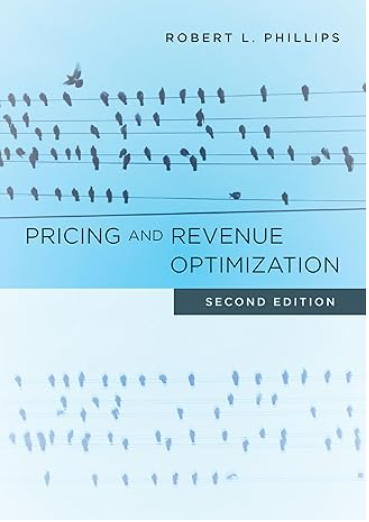The Role of Data Analytics in Shaping Effective Pricing Models
 PriceBeam
·
4 minute read
PriceBeam
·
4 minute read
Introduction
In today’s dynamic market, businesses are constantly seeking ways to optimize their pricing strategies to be able to increase revenue, profit and customer satisfaction.
Before the use of data analytics and modern pricing systems, businesses often set their prices by comparing them to those of similar competitor products. Although this manual method could work, but not optimally, for small companies with a limited range of products, it became impractical for larger organizations with vast inventories. Each product requires a unique pricing approach, which can overwhelm marketing teams and lead to less effective pricing decisions. As a result, these companies may suffer substantial financial losses due to inefficient pricing practices.
The advent of data analytics has revolutionized the pricing quest, providing companies with powerful tools to shape effective pricing models, whilst making more informed, data-driven choices based on customer behavior and market conditions. This article explores the pivotal role of data analytics in shaping effective pricing models and the benefits it brings to businesses across various industries.
Understanding Data Analytics in Pricing
Pricing is a crucial component of a business strategy, as it directly affects a company's profitability, market share, and customer satisfaction. Implementing effective pricing models is essential for several reasons, such as revenue optimization, competitive positioning, customer retention and profit increase. Data analytics assists in pricing by offering valuable insights into customer behavior, market trends, and competitor strategies, by using a variety of methods.
- Price Optimization
Price optimization involves analyzing customer and market data to identify the ideal price point for a product or service. This method relies on data analytics to assess price sensitivity, understanding how price changes affect customer demand and determining the potential profit a retailer can earn at various price levels.
Price sensitivity varies significantly among consumers. Therefore, it is beneficial to use market segmentation to divide consumers into distinct groups based on their price sensitivities. Businesses can increase profits by charging higher prices for certain segments, while offering discounts and promotions to other segments to boost conversions.
- Dynamic Pricing
Dynamic pricing adjusts product or service prices in real-time based on variables like customer demand and competition. By utilizing real-time analytics, retailers can set prices that mirror current market conditions, thus optimizing revenue more effectively compared to traditional strategies that rely on fixed costs and profit margins.
- Bundle Price Analysis
Bundle price analytics involves finding the best discounted price for a group of products or services. This process takes into account the individual prices of the bundled items, production costs, desired profit margins, and expected customer demand. The goal is to motivate customers to purchase more items by offering them a cost-effective option. This data-driven approach helps retailers increase revenue and improve customer loyalty and retention.
Benefits of Data-Driven Pricing Models
- Pricing Opportunities
Leveraging pricing analytics enables companies to identify revenue-enhancing opportunities. By examining customer demand across various products and services, businesses can create bundles at different price points, maximizing sales revenue. Using advanced algorithms, such as the Value Attributes (CBC) methodology, helps determine the most profitable pricing strategies, thereby maximizing margins without compromising sales volume.
- Enhanced Decision Making
Data analytics offers a holistic view of the market, helping businesses make informed pricing decisions. By comprehending the factors that influence customer purchasing behavior, companies can set prices that maximize revenue while maintaining competitiveness.
- Increased Agility
Traditional pricing strategies often lack the flexibility needed to adapt to market dynamics. Data-driven models, on the other hand, enable dynamic pricing, allowing real-time price adjustments based on market conditions, competitive actions, and customer behavior. This agility ensures businesses stay competitive and responsive to market fluctuations.
- Customer Insights
Data analytics facilitates personalized pricing strategies tailored to specific customer segments. Understanding the distinct preferences and behaviors of various customer groups allows businesses to offer targeted promotions and discounts, enhancing customer satisfaction and loyalty. Established methodologies, such as the Comparative Willingness-to-Pay, help determine acceptable price ranges within targeted segments.
- Promotional Strategies
Data analytics plays a vital role in shaping promotional and discount strategies. By analyzing customer reactions to promotions, businesses can design targeted campaigns, adjust discount levels, and optimize the effectiveness of sales promotions. Techniques like the Promotion Lab enable testing of various promotional mechanisms to identify the best offers for customers.
- Competitive Advantage
Companies that effectively utilize data analytics in their pricing strategies can gain a significant competitive edge. By staying ahead of market trends and competitor actions, businesses can position themselves as leaders in their industry, attracting more customers and increasing market share.
Challenges and Considerations
While the advantages of data-driven pricing models are evident, implementing these strategies presents certain challenges. Businesses need to invest in appropriate technology and expertise to effectively gather, analyze, and interpret data. Furthermore, ethical considerations regarding pricing fairness and transparency must be managed to uphold customer trust and ensure regulatory compliance.
Discussing the significance of data in pricing success also requires acknowledging its ever-changing nature. Effective data is not just a historical record; it is continuously evolving within your customers and organization. Consequently, your pricing model must adapt accordingly. This highlights the critical role of business intelligence technology, which leverages live transaction and usage data to monitor the real-time impact of pricing models. With accurate and current data, you can develop and implement competitive pricing strategies efficiently.

The Evolution of Data Analytics in Pricing
The use of data analytics in pricing has advanced considerably over the past decade. Initially, businesses depended on basic statistical tools and historical sales data to guide their pricing decisions. Today, advanced analytics, machine learning, and artificial intelligence have revolutionized this process, allowing for more precise and dynamic pricing strategies. By leveraging extensive market and customer data, businesses are now optimizing their pricing strategies to maximize revenue and maintain competitiveness.
Businesses across all industries are leveraging the insights provided by data analytics. These data-driven analyses enable companies to understand customer spending habits better and apply the right pricing strategies to their products, leading to improved profit margins.
Looking ahead, data analytics will continue to play a significant role in the evolution of pricing strategies. Innovations like personalized pricing, AI-driven price optimization, and real-time market analysis will further enhance the sophistication and effectiveness of strategies.
Conclusion
In the era of big data, businesses that leverage data analytics to shape their pricing models are better positioned to thrive in competitive markets. By harnessing the power of data, companies can develop pricing strategies that are dynamic, responsive, and customer centric. The integration of advanced analytics into pricing decisions not only enhances profitability but also drives customer satisfaction and loyalty. As data analytics continues to evolve, its role in shaping effective pricing models will only become more critical, offering businesses unprecedented opportunities for growth and success.
.png?width=400&height=100&name=PBLogoTransparent%20(1).png)




-1.png)

